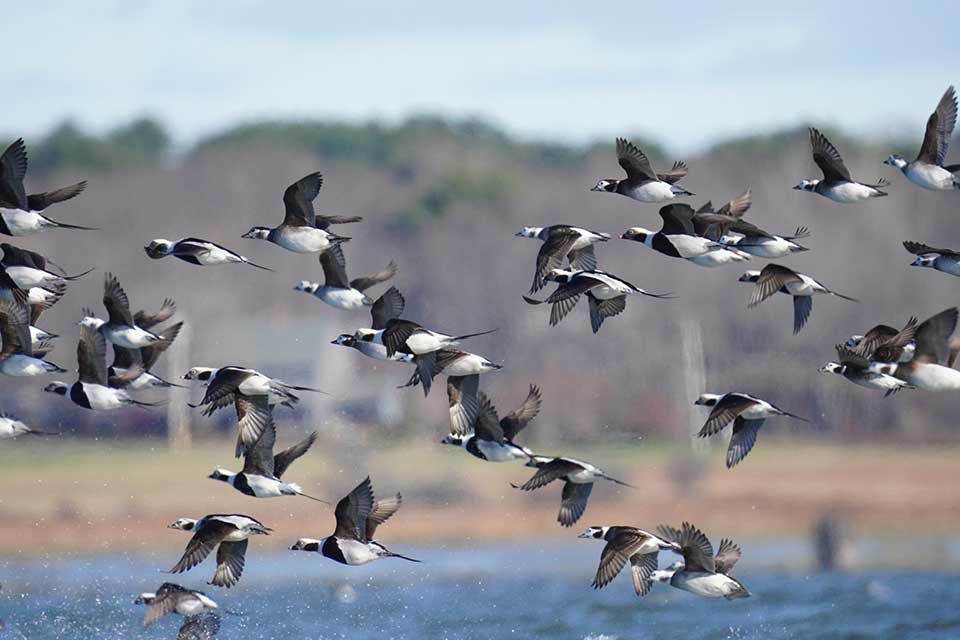SDJV 34 Interim Report FY03
SDJV34 Interim Report FY04
SDJV34 Final Report FY05
Effects of nutrients on the physiology, energetics, and behavior of captive sea ducks relative to sea duck feeding ecology in Chesapeake Bay

Project Number: 34
Year Funded: 2005 (year endorsed)
Lead Institution(s): Patuxent Wildlife Research Center
Project Lead: Matthew Perry
Collaborator(s): Alica Wells-Berlin (USGS PWRC), USFWS, CWS
Location: Chesapeake Bay
Focal Species: Long-tailed Duck (Clangula hyemalis), Black Scoter (Melanitta americana), Surf Scoter (Melanitta perspicillata), White-winged Scoter (Melanitta delgandi)
Project Description: The goal of this study is to determine the preferred food sources of sea ducks wintering on the Chesapeake and whether this selection is a function of prey availability or energetic value. Objectives include: 1. Determine the preferred food sources for each species based on what is available in the Chesapeake Bay in winter, 2. Determine what cues influence prey selection whether it is size, shape, color, or energy, 3. Examine the effects of prey density (prey availability) on prey selection by each species, and 4. Develop a hypothetical model of sea duck feeding ecology.
Project Reports:
